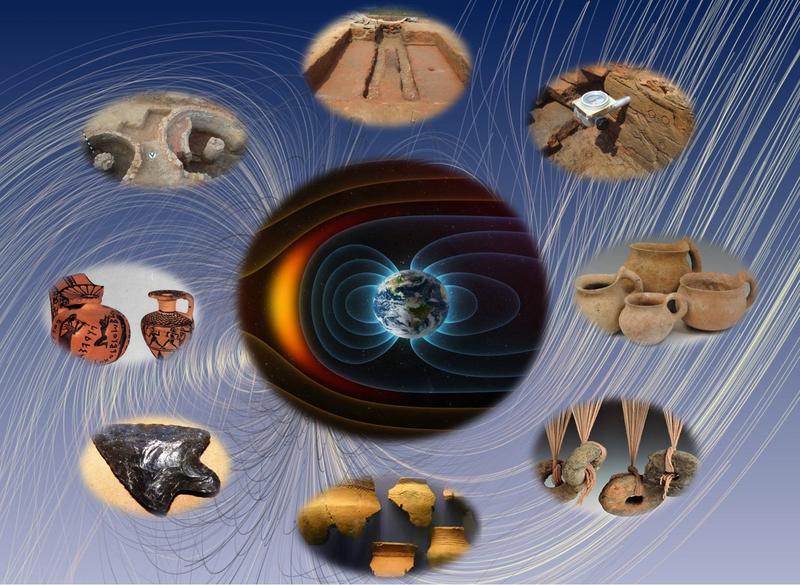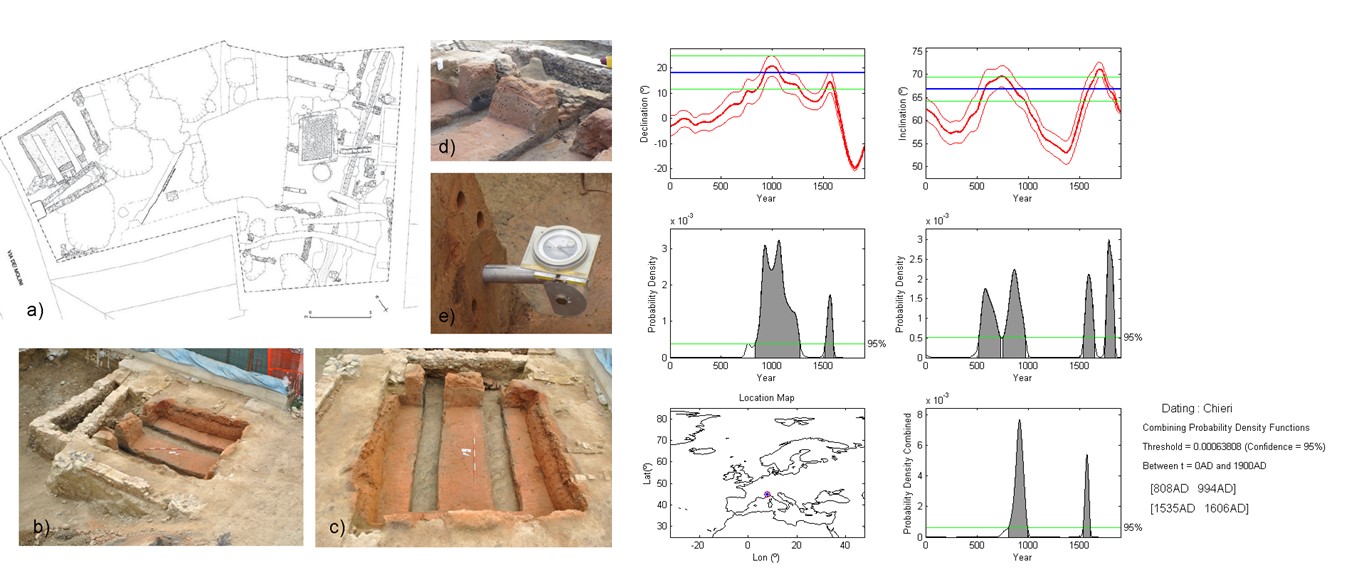Magnetism and archeology
Magnetismo e Archeologia
Staff
- Zanella Elena (Group leader)
- Tema Evdokia (Member)
Contacts

ERC Sectors
Activity
Our research group has a long experience on archaeomagnetic research, mainly focused on four principal research lines:
- The study of the direction and the intensity of the Earth’s magnetic field in the past through the investigation of ancient baked clays;
- The reconstruction of the SV path during the last millennia and the establishment of reference SV curves;
- The archaeomagnetic dating of baked clay archaeological structures;
- The investigation of the magnetic properties, heating temperatures, production technologies and provenance of archaeological artefacts (e.g. pottery, ceramics, obsidians, etc).

Fig. 1 Archaeomagnetic investigation and dating of a kiln excavated at Chieti (modified from Tema et al., 2014).
Dr. Enzo Ferrara, Istituto di Ricerca Metrologica, Torino, Italy Dr. Pierre Camps, Géosciences Montpellier, Université de Montpellier, France Dr. Miriam Gomez-Paccard, Instituto de Geociencias, Madrid, Spain Dr. Avto Goguichaichvili, Universidad Nacional Autónoma de México, Morelia, Mexico Dr. Philippe Lanos, Université Bordeaux‐Montaigne and Géosciences‐Rennes, Université Rennes 1, France
Publications
Tema, E., Morales, J., Goguitchaichvili, A., Camps, P., (2013). New archaeointensity data from Italy and geomagnetic field intensity variation in the Italian Peninsula. Geophysical Journal International, 193 (2), 603-614. https://doi.org/10.1093/gji/ggs120
Tema, E., Ferrara, E., Camps, P., Conati Barbaro, C., Spatafora, S., Carvallo, C., Poidras, Th., (2016). The Earth's magnetic field in Italy during the Neolithic period: New data from the Early Neolithic site of Portonovo (Marche, Italy). Earth and Planetary Science Letters, 448, 49-61.
Tema, E., Herrero-Bervera, E., Lanos, Ph., (2017). Geomagnetic field secular variation in Pacific Ocean: A Bayesian reference curve based on Holocene Hawaiian lava flows. Earth and Planetary Science Letters, 478, 58-65. https://doi.org/10.1016/j.epsl.2017.08.023
Tema, E., Hedley, I., Pavón-Carrasco, F.J., Ferrara, E., Gaber, P., Pilides, D., Toumazou, M., Violaris, Y., Webb, J., Frankel, D., (2021). The directional occurrence of the Levantine geomagnetic field anomaly: New data from Cyprus and abrupt directional changes. Earth Planetary Science Letters, 557, 116731, https://doi.org/10.1016/j.epsl.2020.116731
Zanella, E., Ferrara, E., Bagnasco, L., Ollà, A., Lanza, R., Beatrice, C., (2012). Magnetite grain-size analysis and sourcing of Mediterranean obsidians. Journal of Archaeological Science, 39, 1493-1498, https://doi.org/10.1016/j.jas.2011.12.030
Projects related to the Research
- AARCH- Archaeomagnetic Applications for the Rescue of Cultural Heritage. Marie Curie Training Network (EU), EU funded, HPRN-CT-2002-00219, (2003-2006). Leggi il progetto
- GALILEO 2012-2013: ‘Magnetismo delle rocce a servizio del patrimonio culturale: Uno strumento importante per la datazione e per la comprensione della tecnologia delle strutture cotte nell’antichità/ Le magnétisme des roches au service du patrimoine culturel: Un outil pour la datation des terres cuites archéologiques’. Funded by the Italian-French University- Galileo Collaboration Program.
- BE ARCHAEO-Beyond Archaeology: An advanced approach linking East to West through science, field archaeology, interactive museum experiences. H2020-MSCA-RISE-2018 (18/02/2019-17/02/2023). Leggi il Progetto su Cordis Europa
- SAGA- The Soil Science & Archaeo-geophysics Alliance: going beyond prospection. COST European Cooperation in Science and Technology – Action CA17131 (26/10/2018-25/10/2022).
Tag: Secular variation, archaeomagnetic dating, archaeometry





